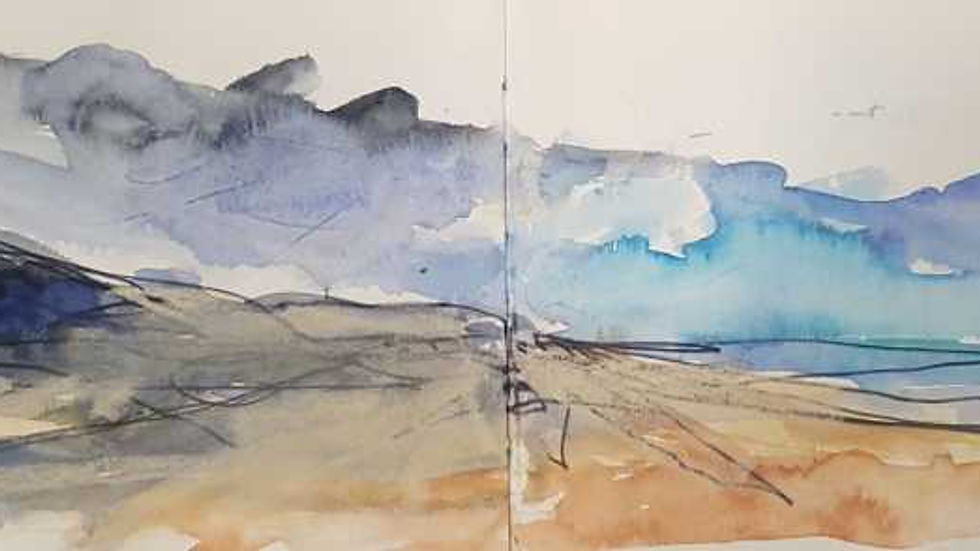Capturing the Magic of the Sea: A Guide to Quick Seascapes
- wim van de wege
- Jan 9
- 3 min read
Updated: May 29
The Beauty of Seascapes
There’s something magical about capturing the sea. The constantly shifting colors, the movement of the waves, and the light dancing on the water—no two days are the same. Quickly sketching with watercolor, complemented by acrylic and pastel, is a fantastic way to capture this dynamism and atmosphere. It’s not about perfection but about spontaneity and emotion.

For years, I lived along the shores of the Westerschelde and Oosterschelde. I spent countless hours painting by the North Sea. That’s where I learned how light and colors constantly shift, sometimes literally from minute to minute. There are moments when the colors are so intense and unexpected that they almost seem unreal. If I were to paint those exact colors, I would undoubtedly get comments about my use of color. This seascape is a perfect example: at that moment, it truly was this vibrant and colorful.

Working Quickly
When painting seascapes, it’s all about speed and intuition. The water moves, the clouds shift, and the light constantly transforms. Watercolor is perfect for swiftly capturing the flowing lines of the waves and the soft color transitions in the sky. Acrylic adds texture and depth, while pastel is ideal for accentuating details or suggesting movement in both the sky and the water.

The sea offers an endless palette of colors: deep blues, turquoise, silvery grays, and sometimes even fiery oranges and pinks at sunrise or sunset. By quickly layering and letting colors flow freely, you can create an atmosphere that makes you feel the fresh sea breeze and smell the salty air.

What makes this approach so special is that no two artworks will ever be the same. The sea always surprises you. One moment the water is calm and serene; the next, it’s wild and dramatic. This ensures you’ll never tire of the subject and will always remain inspired.

Tips for Quick Seascapes
Use a Limited Set of Materials: Choose a few basic watercolor shades, a tube of white acrylic for highlights, and a few pastel sticks for details.
Keep It Light and Loose: Focus on the essence rather than the details.
Don’t Fear Mistakes: Unexpected colors or textures can make your work more exciting.
Work Outdoors: If possible, go to the coast and paint on location. The energy of the surroundings will inspire your work.

The Mindfulness of Sketching
Sketching seascapes is a perfect way to combine creativity with mindfulness. The quick, spontaneous process allows you to capture the magic of the moment without getting caught up in technical details.
The Process
Begin by observing your surroundings intently. Notice how the colors and light interact with the water. This observation becomes the foundation for your painting. Use your materials liberally, letting colors blend and flow. The beauty of watercolors lies in their unpredictability.
The Reward
With each stroke of your brush, you become part of the landscape. There is something deeply rewarding about translating what you see and feel onto paper. So grab your sketchbook, your brushes, and head to the sea. You’ll be amazed by what you create!
If you’re searching for more inspiration, consider exploring how the environment influences creativity. The coastal setting can invigorate your artistic spirit and generate unique ideas. Check out more about the role of nature in creative expression and how it can lead to exhilarating breakthroughs.




Comments